
Carl Barks was an American cartoonist, author, and painter. He is best known for his work in Disney comic books, as the writer and artist of the first Donald Duck stories and as the creator of Scrooge McDuck. He worked anonymously until late in his career; fans dubbed him The Duck Man and The Good Duck Artist. In 1987, Barks was one of the three inaugural inductees of the Will Eisner Comic Book Hall of Fame.

Huey, Dewey, and Louie are triplet cartoon characters created by writer Ted Osborne and cartoonist Al Taliaferro, and are owned by The Walt Disney Company. Huey, Dewey, and Louie are the nephews of Donald Duck, sons of Della Duck, the grand-nephews of Scrooge McDuck, and the friends of Webby Vanderquack. Like their maternal uncles, the brothers are anthropomorphic white ducks with yellow-orange bills and feet. They typically wear shirts and colorful baseball caps, which are sometimes used to distinguish them, since Louie always wears green, Huey wears red, and Dewey wears blue. Huey, Dewey, and Louie have made several animated appearances in both films and television, but comics remain their primary medium. The trio are collectively the 11th most published comic book characters in the world, and outside of the superhero genre, second only to their uncle Donald.
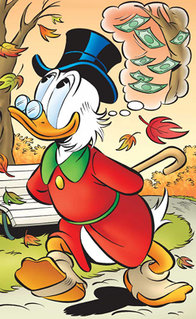
Scrooge McDuck is a cartoon character created in 1947 by Carl Barks for The Walt Disney Company. Appearing in Disney comics, Scrooge is a Scottish-American anthropomorphic Pekin duck. Like his nephew Donald Duck, he has a yellow-orange bill, legs, and feet. He typically wears a red or blue frock coat, top hat, pince-nez glasses, and spats. He is portrayed in animation as speaking with a Scottish accent. Originally intended to be used only once, Scrooge became one of the most popular characters in Disney comics, and Barks's signature work. Scrooge lives in the city of Duckburg in the fictional US state of Calisota, whose claimed location is in California in the real-world United States.

The Life and Times of Scrooge McDuck (Lo$) is a serial of 12 comic book stories written and drawn by Don Rosa, lettered by Todd Klein, first published by the Danish publisher Egmont in the magazine Anders And & Co. from 1992–94 and later in English in Uncle Scrooge #285 through #296 (1994–96). The stories chronicle the in-universe biography of Scrooge McDuck before his introduction in 1947. The stories were later collected and published together in a single volume. Rosa later published additional stories which expanded on Scrooge's biography. These were released as The Life and Times of Scrooge McDuck Companion.
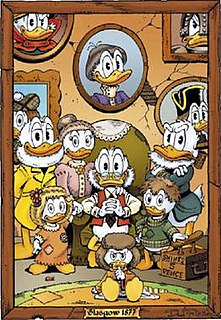
The Clan McDuck is a fictional Scottish clan of cartoon ducks from which Disney character Scrooge McDuck is descended. Within the Donald Duck universe, the clan is related to the American Duck family through the marriage of Hortense McDuck and Quackmore Duck, Donald and Della Duck's parents, giving both of them partial Scottish ancestry.

Mr. Duck Steps Out is a Donald Duck cartoon made by The Walt Disney Company, which released on June 7, 1940, and featured the debut of Daisy Duck. The short was directed by Jack King and written by Carl Barks, Chuck Couch, Jack Hannah, Harry Reeves, Milt Schaffer, and Frank Tashlin.

Mickey's Twice Upon a Christmas is a 2004 American Christmas film directed by Matthew O'Callaghan. Segments of the anthology film were directed by Peggy Holmes, O'Callaghan, Theresa Cullen, and Carole Holliday. It was produced by DisneyToon Studios. The film is the computer-animated sequel to Mickey's Once Upon a Christmas (1999), and it features Mickey Mouse, Minnie Mouse, Pluto, Goofy, Max, Donald Duck, Daisy Duck, Huey, Dewey, and Louie and Scrooge McDuck in five different segments.
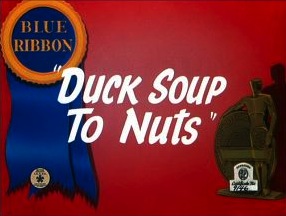
Duck Soup to Nuts is a 1944 Warner Bros. Looney Tunes cartoon directed by Friz Freleng. The cartoon was released on May 27, 1944, and stars Daffy Duck and Porky Pig.

Good Scouts is a 1938 American animated short film produced by Walt Disney Productions and released by RKO Radio Pictures. The cartoon follows Donald Duck leading his nephews Huey, Dewey, and Louie on a scouting trip through the wilderness. It was directed by Jack King and features Clarence Nash as Donald and the three nephews.
"The Golden River" is a Disney comics story written and drawn by Carl Barks in 1957 and first published in 1958, in Uncle Scrooge #22. It is somewhat based on the fairy tale The King of the Golden River, by John Ruskin.
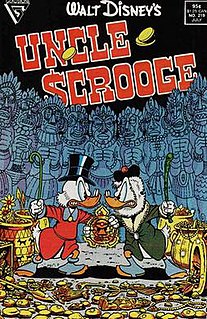
"The Son of the Sun" is the first Scrooge McDuck comic by Don Rosa, first published in Uncle Scrooge #219 in July 1987. It is a well-known comic book story that features Disney's Scrooge McDuck, Donald Duck, and his three nephews. This story is most notable for establishing Don Rosa as a major talent in the Disney comic book industry, as well as fulfilling Rosa's childhood dream of becoming a writer/illustrator of stories featuring Scrooge McDuck.

Of Ducks, Dimes and Destinies, or Of Ducks and Dimes and Destinies, is a 1995 Scrooge McDuck comic by Don Rosa. Even though it was not originally a part of Rosa's The Life and Times of Scrooge McDuck, it became known as Part 0.
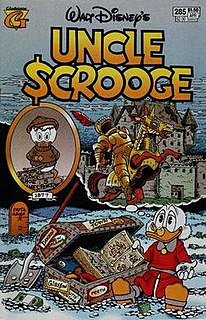
The Last of the Clan McDuck is a 1992 Scrooge McDuck comic by Don Rosa. It is the first of the original 12 chapters in the series The Life and Times of Scrooge McDuck. The story takes place from 1877 to 1880 when Scrooge is a child in Glasgow, Scotland. He comes in conflict with The Whiskervilles, earns his Number One Dime and heads for the United States on a cattle boat.

Uncle and the Treacle Trouble (1967) is a children's novel written by J. P. Martin, the fourth of his Uncle series of six books. It was illustrated, like the others in the series, by Quentin Blake.
The Dutchman's Secret is a 1999 Donald Duck comic story by Don Rosa. It is a direct sequel to his 1998 story The Vigilante of Pizen Bluff and is one of his most historically accurate stories.
"Treasure Under Glass" is a 1991 Uncle Scrooge comic story by Don Rosa.
"The Secret of Atlantis" is a 32-page Disney comics story written and drawn by Carl Barks, and lettered by his wife, Garé Barks.
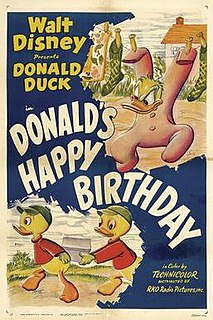
Donald's Happy Birthday is a 1949 Donald Duck cartoon featuring Donald Duck and his nephews Huey, Dewey, and Louie. In the short film, Huey, Dewey, and Louie would like to buy a box of cigars for Donald's birthday but Donald decides to keep the money.













